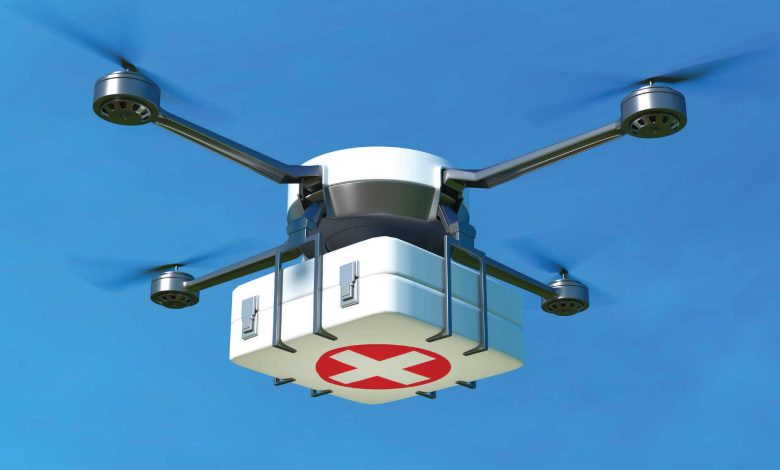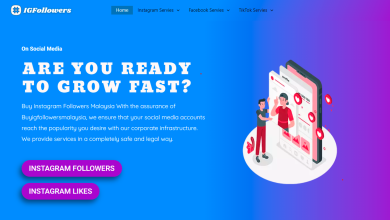
As healthcare technology continues to advance, the importance of timely access to healthcare services is becoming increasingly important. The delays in diagnosis and, subsequently, the treatment and healthcare provided, have a negative effect on patients’ health. It is a well-known fact that transportation-related issues, including limited access to vehicles, insufficient infrastructure, long travel distances and transit time, high transportation costs, and unfavorable policies affecting travel, prevent an estimated 3.6 million people from accessing timely medical care, each year, in the US. Such transportation barriers impact both urban and rural communities alike, highlighting the urgent need for solutions that can bridge this critical gap in healthcare access. Therefore, ensuring prompt and efficient access to healthcare has become a critical objective of the healthcare industry. Amongst various ways to deal with the aforementioned challenges, Unmanned Aerial Vehicles (UAVs) have emerged to be an effective solution for a number of problems faced by the healthcare industry. When integrated with emerging technologies, such as the Internet of Things (IoT), 5G and beyond 5G (B5G), UAVs are witnessing a surge in applications across multiple fields, including atmospheric sensing, emergency and crisis management, data sharing, exploration of hazardous or inaccessible regions, freight transportation, military operations, indoor and outdoor navigation, object detection and tracking, public security, traffic surveillance, post-disaster operations, healthcare, infrastructure management, wildfire monitoring and logistics. The global medical drone market is anticipated to grow at a CAGR of around 15%, till 2035, according to Roots Analysis. Driven by the rising need of medical devices for enhancing patient survival, outcomes and quality of life, the medical drone market is anticipated to witness an exponential growth in the coming decade.
MEDICAL DRONES OVERVIEW
Unmanned aerial vehicles, commonly known as drones, are aircraft that operate without a human pilot on board. They can be remotely controlled by an operator on the ground or fly autonomously through software-controlled flight plans. Drones have become increasingly prevalent in the modern society; they have transcended their military origins and are now finding relevance in a variety of sectors, including healthcare, e-commerce, agriculture, surveillance, emergency response, entertainment and humanitarian aid. It is worth highlighting that, during the COVID-19 pandemic, medical drones have played a critical role in delivering medical supplies, including blood, vaccines, and medications, to remote areas that lack traditional healthcare facilities. The agility of drones allows them to navigate through obstacles, such as buildings and bridges and reach areas that would otherwise be inaccessible by other modes of transport, making them a vital tool in combating the pandemic.
ADVANTAGES OF MEDICAL DRONES
Medical drones offer various advantages over traditional delivery practices, few are listed below:
- Safe and rapid delivery of medical support to small or remote clinics or hospitals, including diagnostics, telemedicine, drugs and portable ultrasound tools to people in emergency situations.
- Doctors can be utilized by doctors to scan patients for tumors without invasive procedures or harmful radiation exposure as modern-day drones are equipped with infrared cameras.
- Aerial imaging captured by drones can aid doctors in visualizing organ connections and identifying potential postoperative issues.
- Drones can offer cost savings in healthcare delivery, with lower capital and operational expenses compared to traditional transportation methods.
- Drones in healthcare are also being increasingly utilized to predict, prevent, and investigate disease outbreaks.
APPLICATIONS OF MEDICAL DRONES
The various applications of drones in the healthcare industry include:
- Emergency Blood Delivery: Drones can rapidly deliver blood products to remote or disaster-stricken areas where traditional transportation methods might be slow or inaccessible. This can be critical for emergency situations where immediate access to blood is essential.
- Overcoming Geographic Barriers: In areas with challenging geography, such as islands, mountainous terrain, or areas with poor road infrastructure, drones can navigate more efficiently, ensuring timely delivery of blood products.
- Enhancing Blood Bank Efficiency: Medical drones can improve the efficiency of blood banks by ensuring that they have a more consistent supply of blood products. Drones can transport blood from collection centers to central storage facilities, helping maintain adequate stock levels.
- Reducing Transportation Costs: While the initial investment in drone technology can be significant, over time, it may reduce the overall transportation costs associated with blood product delivery, especially in remote areas where traditional transportation methods are expensive.
- Monitoring and Data Collection: Drones equipped with sensors can also monitor temperature, humidity, and other environmental factors during transportation, ensuring the quality of blood products and providing valuable data for quality control.
CHALLENGES ASSOCIATED WITH DRONES IN HEALTHCARE
The challenges associated with the drones deployed in healthcare include:
- Work Force and Infrastructure: Effective operation of drones requires trained personnel and constant supervision from the ground. Limited infrastructure, such as runways, can pose potential challenges, however, this can be mitigated by utilizing drones equipped with vertical takeoff and landing capabilities.
- Job Displacement: In the context of medical applications, the adoption of drones may potentially result in job displacement for individuals currently involved in the transport of medical supplies.
- Regulatory Issue: Obtaining legal permission from aviation authorities is a significant obstacle to the use of medical drones. In the US, the Federal Aviation Administration (FAA) permits the use of UAVs weighing less than 25 kg, within a visual line-of-sight (VLOS), and with a maximum ground speed of 100 miles per hour and a maximum altitude of 400 feet above ground level. On the other hand, there are some developing countries, such as India where drones for commercial purposes are currently prohibited.
- Payload Constraints: Drones are limited in terms of payload capacity, usually ranging from 2-4 kg. Further costs associated with drones increase when customized for carrying heavy weights / medical supplies or integrated with AI. For example, specialized packaging required for the transportation of thermolabile biologics adds to extra costs. It is important to consider the size and weight restrictions of medical drones to maximize their payload capability and delivery speed.
- Other Constraints: Battery life and weather conditions are concerns. Electromagnetic signals can disrupt drone monitoring from the ground.
FUTURE PERSPECTIVE
It is evident that drones have great opportunities in the field of public health. Major corporations such as Amazon, Walmart, and 7-Eleven have commenced significant testing and implementation of drone technology for retail purposes, encouraging development of drone technology. This widespread adoption of drones by large retailers offers several favorable implications. First of all, it is expected to encourage research and development to progress drone technology and its application in different sectors. Secondly, as the use of drones increases, it will ultimately lead to a reduction in the costs of drone technology, lowering the barriers of entry and promoting widespread adoption of drones in healthcare organizations as it is one of the fastest-growing sectors in the world. Lastly, greater adoption of drone technology will enable it to become a mainstream tool for supply-chain and logistics requirements, which will stimulate the growth of the industry. However, the drawbacks and threats in the application of drones, especially for the field of public health, still persist. These can be overcome with the advancement of technology, research and regulatory approvals. An assessment of public safety and privacy has to be done before scaling up the use of drones in public health. More studies are needed on the safety of drones, including drone crashes and the reasons for crashes. In addition, there is a need for healthcare awareness to alleviate the apprehension about drones in public’s mind as drones are still a relatively new technology, and many people may not fully understand their capabilities and limitations. There may be concerns about safety, privacy, and the ethical implications of using drones in healthcare operations.
About Roots Analysis
Roots Analysis is a global leader in the pharma / biotech market research. Having worked with over 750 clients worldwide, including Fortune 500 companies, start-ups, academia, venture capitalists and strategic investors for more than a decade, we offer a highly analytical / data-driven perspective to a network of over 450,000 senior industry stakeholders looking for credible market insights. All reports provided by us are structured in a way that enables the reader to develop a thorough perspective on the given subject. Apart from writing reports on identified areas, we provide bespoke research / consulting services dedicated to serve our clients in the best possible way.





